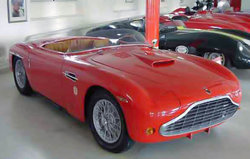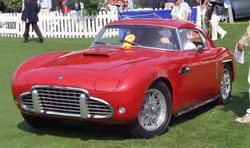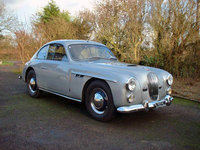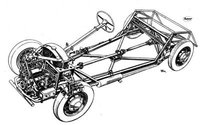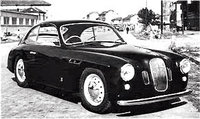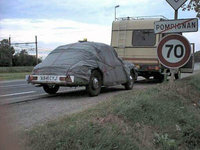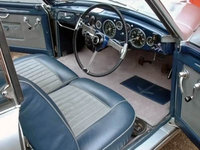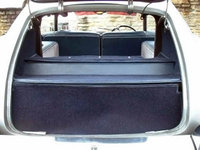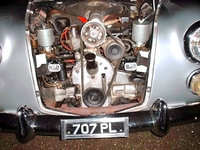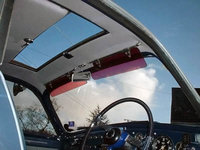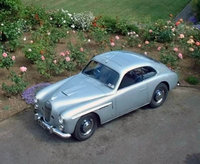Difference between revisions of "Farina"
m |
m |
||
| Line 21: | Line 21: | ||
Stabilimenti Farina was also the company where [[Alfredo Vignale]] learned the trade of coachbuilding before starting his own '[[carrozzeria]]'; [[Vignale]]. | Stabilimenti Farina was also the company where [[Alfredo Vignale]] learned the trade of coachbuilding before starting his own '[[carrozzeria]]'; [[Vignale]]. | ||
| − | + | [[Image:Alfa_Romeo_by_Farina.jpg|thumb|300px|right|'''Alfa Romeo by Farina''' [http://www.oldcarandtruckpictures.com <Small>Source</small>]]] | |
Revision as of 00:05, 2 April 2009
In 1906 Giovanni Farina established Stabilimenti Industriali Giovanni Farina S.A. at Turin. Learning from his experience gained in his earlier career, Farina combined his aesthetic design ideas with an industrialised approach. From 1919 they added the capacity to mass produce bodies, starting with the Temperino, at a rate of around 1500 per year. Research into mechanical devices such as brakes and sunroof mechanisms was also followed.
Famous designers, apart from the Farina brothers, who worked there included Boano, Frua and Michelotti. They closed in the early 1950's. Source
Siata build this car on Fiat 8V parts.
These 2 cars build by Stabilimenti Farina, not to be confused by Pininfarina, and after Stab. Farina closed in 1951, the production was taken over by Carrozzeria Balbo.
Other info states that all Siata cars was build by Carrozzeria Motto , despite what badge there was on the car at delivery.
Farina has become one of the most famous automotive names because of the two coachbuilding companies Stabilimenti Farina and Battista's own Pininfarina, but also because of their nephew Nino Farina, who was the very first Formula One champion.
Stabilimenti Farina was also the company where Alfredo Vignale learned the trade of coachbuilding before starting his own 'carrozzeria'; Vignale.
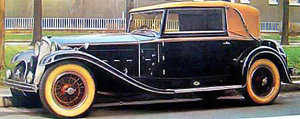
Story by VeloceToday.com
Farina's Jupiter Symphony
Ango-Italian of the Rarest Order
By Pete Vack, Pat Lockyer and Edmund Nankivell
Once in a while it is fun to take a look at an Italian body on foreign chassis. Perhaps more than any other country, Italians were the world’s courtiers, their special designs graced chassis from almost every industrialized nation.
Recently a rare Stablimenti Farina bodied Jowett Jupiter came to our attention. It is particularly charming, and based on a very advanced British chassis, at a time when British chassis were not particularly advanced.
Jowett had been building two cylinder and flat four cars since 1906, with a considerable degree of success. In 1947, Jowett introduced a truly remarkable car, the Javelin, which featured a 1500cc flat four, torsion-bar springing all round - independent at the front, live axle at the rear with an excellent Panhard rod location, and a very aerodynamic body. This was followed by the Jupiter, first exhibited at the Earls Court Motor Show of October 1949. This was followed by the Jupiter, whose chassis was first exhibited at the Earls Court Motor Show of October 1949. The torsionally stiff tubular frame with rack and pinion steering was designed at ERA (Dunstable) by the famous Auto Union engineer Dr. Robert Eberan-Eberhorst. The two-seater Jupiter was capable of over 90 mph. The Jowett engine was from the Javelin, a 1500cc flat four watercooled ohv but with twin-carbs on a cross-flow head.
Jowett historian Edmund Nankivell says that "At that time ERA together with Alta were very well-known and admired builders of racing cars and it comes as no surprise to learn that the chassis caused a considerable stir at its announcement. When in June 1950 a Jupiter in its first race (at a time when only three complete cars existed) won its class at Le Mans at record speed, the motoring world took note."
The new British car was no slouch. According to Nankivell , "More race successes followed: at Le Mans (1951 and 1952 making it three on the trot); in 1951 there was a spectacular 1-2 in class at the grueling Tourist Trophy at the dangerous Dundrod country-lane circuit, and the Queen Catharine Cup was won at Watkins Glen."
Back at the salons, in late 1951 and early 1952, the Jupiter chassis was also exhibited at British and continental shows. Coachbuilders were quick to pick up on the advantages of the Jupiter chassis, and Ghia-Suisse, Beutler and Radford constructed special bodies on the tubular Jupiter frame. " But the most famous coachbuilder to work on the Jupiter chassis was, says Nankivell, was Stabilimenti Farina of Turin.
The Stabilimenti Farina Jowett Jupiter that is the subject of this article was built in 1951 for a French customer, the last of four such cars constructed in 1950 and 1951, all of which survive.
This example was exhibited at the Paris Salon of 1951 and it then vanished, to be found in France 2000. It was brought back to the UK in October 2001 and restoration was started apace for completion for a return trip to France under its own power in July 2003 for the Loire Valley Jupitour [1] The new owner,Pat Lockyer, quipped, "The car was found in a small village called LUX-- so of course it is now the Farina De Lux."
The Farina Jupiter had some very advanced features for 1951: Self parking wipers. Assisted door opening mechanism. Headlight flasher and main dip switch on steering column. Separate floorlevel fresh air ventilation for driver and passenger. Spare wheel can be checked and inflated externally. Well-designed tilt-and-slide opening roof.
Owner Pat Lockyer wrote the following about the restoration process. "During the restoration process it was found that the Farina Jupiters steel body was hand-made with at least 50 small separate sections butt-welded with great skill, this was necessary to create the curves and large panels. The boot, bonnet and sun roof are all constructed in alloy for lightness.
"The restoration was not an easy task. To start with I decided to keep it as original as possible so the bodywork was taken down to bare metal and then all the rusted parts (sills floor etc) were cut out whilst leaving the body on the chassis.
"I was surprised to find after removal of the sills that there was a type of rusty Willmot Breedon coil spring mechanisum built in: after dismantling they were found to assist the door opening. I think Giovanni Farina, as he was in his youth a builder of horse drawn vehicles, could not put up with squeaks and rattles so the real reason for these mechanisms was, when the doors are closed, they are put under tension so that hinges and catches are all silent.
"New panels were made by hand, exact copies of the original, and then welded in place. When completed the joints were leaded before a full bare-metal respray. The fuel tank, after years of not being used was full of holes so a second-hand one was found from an early standard Jupiter and modified to fit. It seems Giovanni was a stickler for flowing lines, hence the fuel filler is placed inside the boot as well as the flush door handles, etc.
"The car was originally built with a one-piece curved glass windscreen, but the screen fitted to the car when I bought it was of foggy plastic: now that was a problem! No other manufacturer's screen could be found to fit. I made a mold and several new glass screens were hand re-made at a specialist company in Kent. A new, correct grille was beautifully hand made also.
"High class retrimming was carried out by Pipers of Sparkford, Somerset. In 1951 trafficators were still current in France so Farina fitted these in conjunction with flashers. The other Farina Jupiters just had flashers. The headlights are Marchal and are as original.
"The engine and gearbox with modifications perform well with today’s modern traffic. I find the Farina Jupiter a pleasant car to drive and it makes a very good touring car."
Our thanks to Pat Lockyer for sharing with us his unique and wonderful Farina Jupiter. Learn more about Jowett Jupiter and the four remaining Farina Jupiters at [2]. Source
External Links
| Car Information and Photos by Marque: A - B - C - D - E - F - G - H - I - J - K - L - M - N - O - P - Q - R - S - T - U - V - W - X - Y - Z |
| Motorcycle Information and Photos by Marque: A - B - C - D - E - F - G - H - I - J - K - L - M - N - O - P - Q - R - S - T - U - V - W - X - Y - Z |

